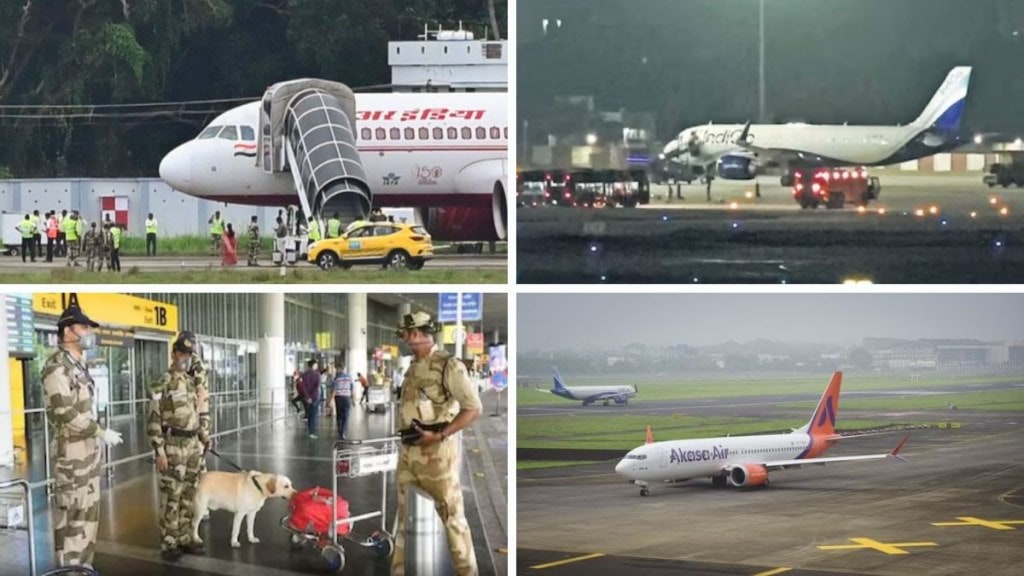In a span of just over a week, more than 170 flights operated by Indian carriers have received bomb threats, leaving the country’s aviation sector reeling from disruption and uncertainty. These threats, often made anonymously on social media, are creating chaos and causing significant financial strain on the aviation industry.
Authorities suspect motives range from malicious intent and attention-seeking to mental health issues or pranks, but pinpointing the individuals responsible has been challenging. According to the reports, these hoaxes are not only causing mass disruptions but are also eroding trust in aviation security.
The situation has become so severe that the Indian government is planning legislative actions to curb these hoax threats, including the potential for placing perpetrators on a no-fly list. In addition to legislative changes, government and aviation officials are working tirelessly to track down those responsible, though efforts are being hampered by the anonymity of social media platforms and a rise in copycat behavior.
Operational chaos in one of the world’s fastest-growing aviation markets
India is one of the fastest-growing aviation markets globally, with more than 150 million domestic passengers flying last year. Over 3,000 flights arrive and depart daily from more than 150 airports across the country. Amid such a bustling travel landscape, bomb threats have a profound ripple effect on the entire aviation system.
When a bomb threat is made mid-flight, it leads to immediate diversions, often to airports far from the intended destination. Last week, an Air India flight bound for the US was diverted to Canada after receiving a threat, while a Vistara flight to Frankfurt was forced to land in Turkey.
These sudden reroutes come with substantial operational costs, from fighter jets being scrambled to escort threatened flights, to extensive checks on baggage, cargo, and catering once the aircraft lands. The entire process can take hours, leading to further delays as airline crews exceed their duty hours and need to be replaced.
Financial toll on airlines and passengers
Bomb hoaxes come with a hefty price tag. Senior officials estimate that a single bomb threat can cost an airline more than Rs 3 crore. Overall, the cumulative financial burden on airlines due to these hoaxes is estimated to be between Rs 60-80 crore. Operational disruptions include flight delays, cancellations, and rebookings, while diverting flights incurs even greater costs. In some cases, where passengers require accommodation, the overall loss can exceed Rs 15-20 crore.
Fuel wastage is another critical factor. Aircraft are often forced to hover while authorities assess the legitimacy of the threat, burning tonnes of fuel. In cases where the flight needs to land immediately, airlines sometimes have to dump fuel at high altitudes to ensure a safe landing, adding more to their expenses.
Legislative changes and punitive measures
In response to this surge in threats, Indian authorities have taken swift action. Last week, a 17-year-old was arrested for creating a social media account and issuing bomb threats to four flights. The arrest is one of the few breakthroughs in an otherwise complex investigation, as many of the anonymous threats have been traced to international locations like Germany and the UK.
Current laws in India prescribe life imprisonment for threats that endanger airport safety, but experts argue this punishment is too severe for hoax threats and would not stand in court. As a result, the government is considering adding perpetrators to a no-fly list and proposing a five-year prison sentence for anyone found guilty of issuing hoax threats.
Impact on India’s aviation future
India’s aviation sector is set to grow rapidly, but the rise in bomb threats could hamper that progress. The additional costs, operational disruptions, and loss of passenger confidence threaten to slow the momentum of what has been one of the world’s most promising aviation markets.
As the government continues to refine its response, the aviation industry and its passengers wait for a long-term solution that will keep skies safe and hoax-free.
